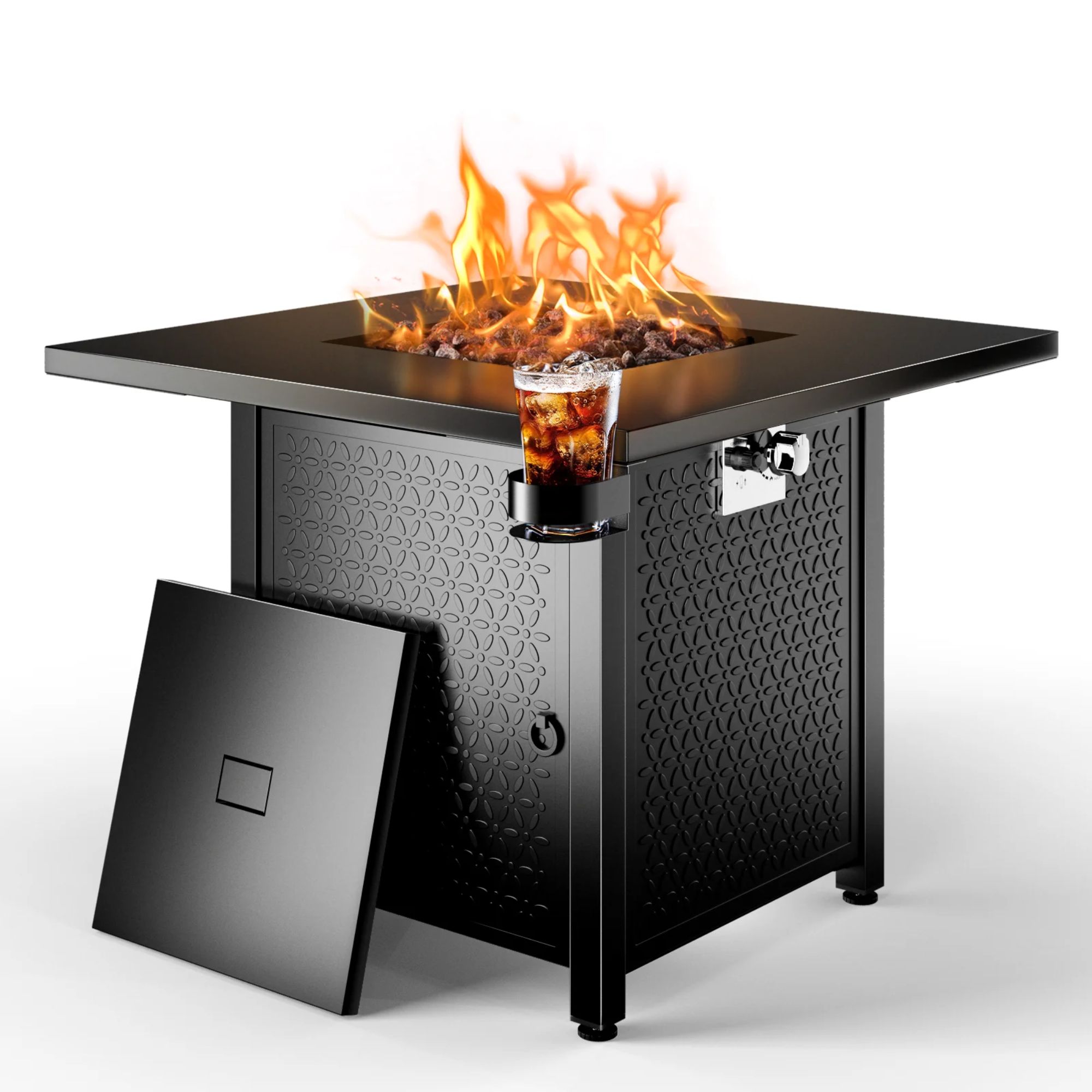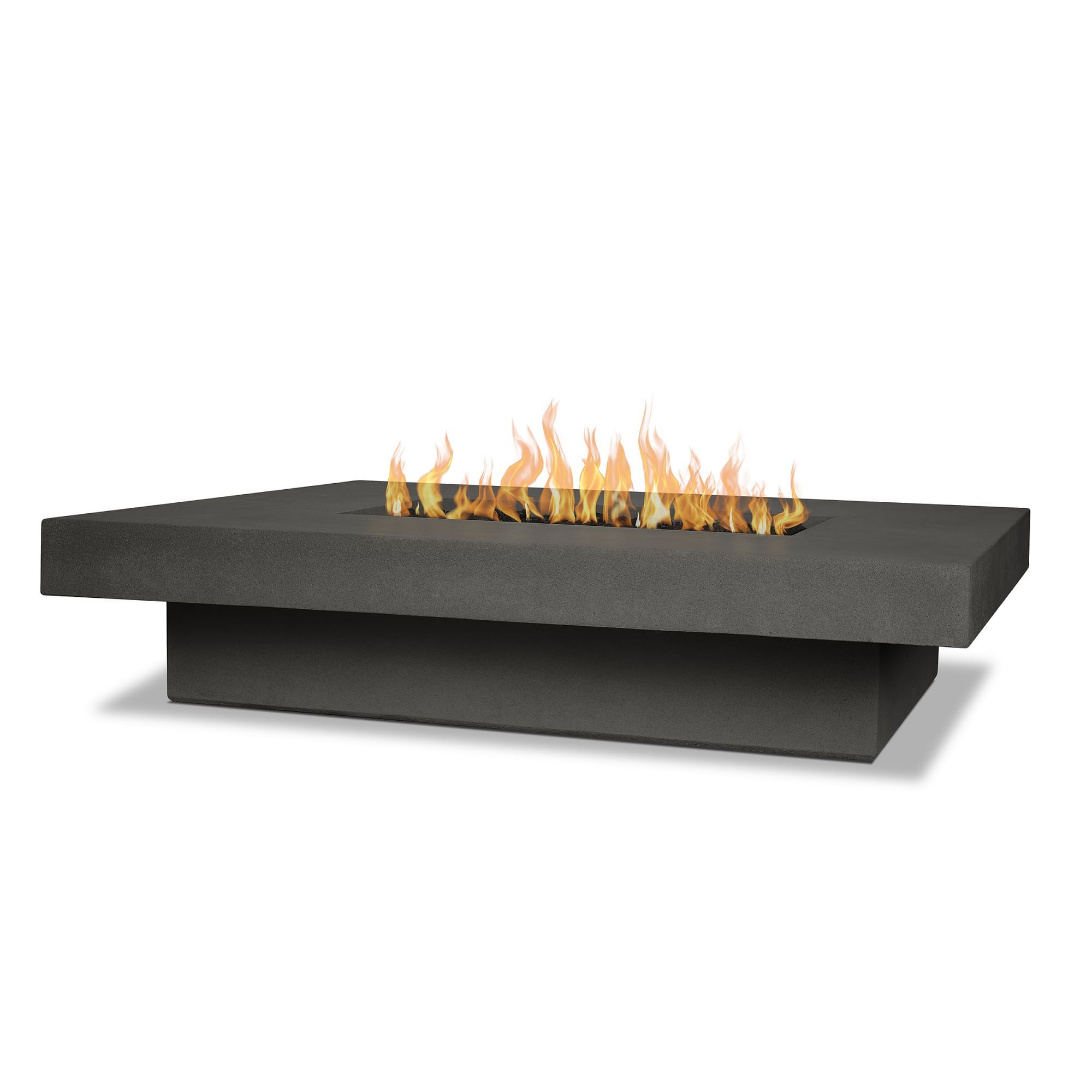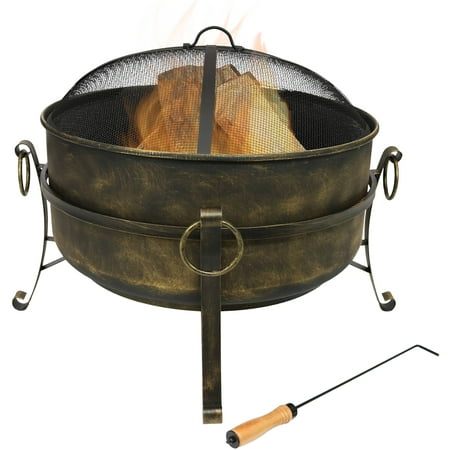Can I have a fire pit under a gazebo? Experts advise against this common backyard mistake
It is tempting to put a fire pit under a gazebo, but it can be dangerous

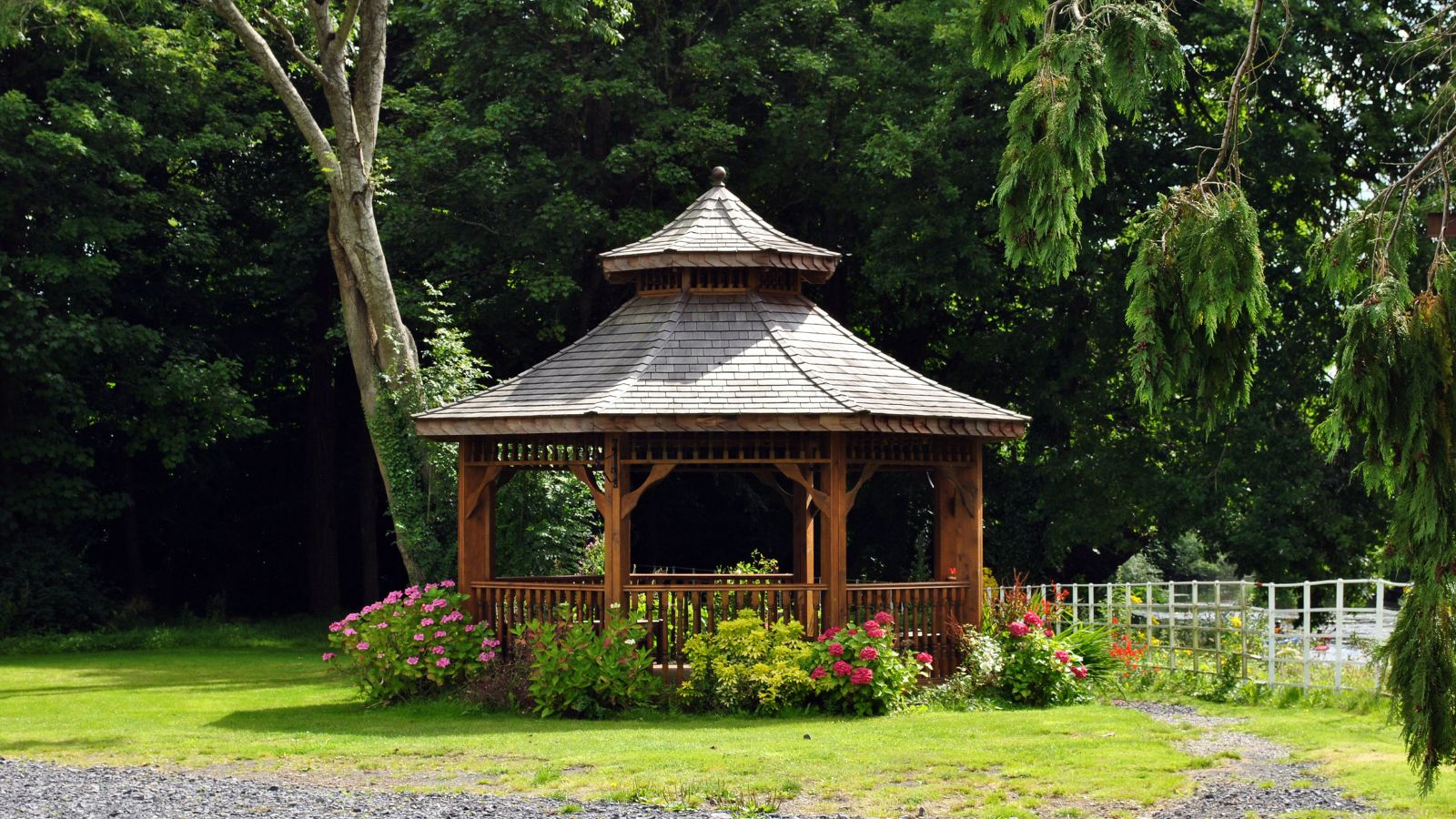
There's nothing like a gazebo for unwinding on a summer evening. They provide shelter from the wind and rain, a comfy place to sit, and in some designs you can even hook up a TV to watch a game or a movie.
When the sun sets and the evening gets a little chillier, it's smart to wonder how you can keep warm. The obvious solution is to put a fire pit in there and enjoy a cozy campfire. However, before you throw some logs on the fire, there are some serious safety considerations to bear in mind.
I spoke to both a fire pit and a pergola expert and they agree that you should never use a wood-burning fire pit in a gazebo. Gas fire pits are safer, but there are still some safety concerns to bear in mind.
Is it safe to have a fire pit under a gazebo?
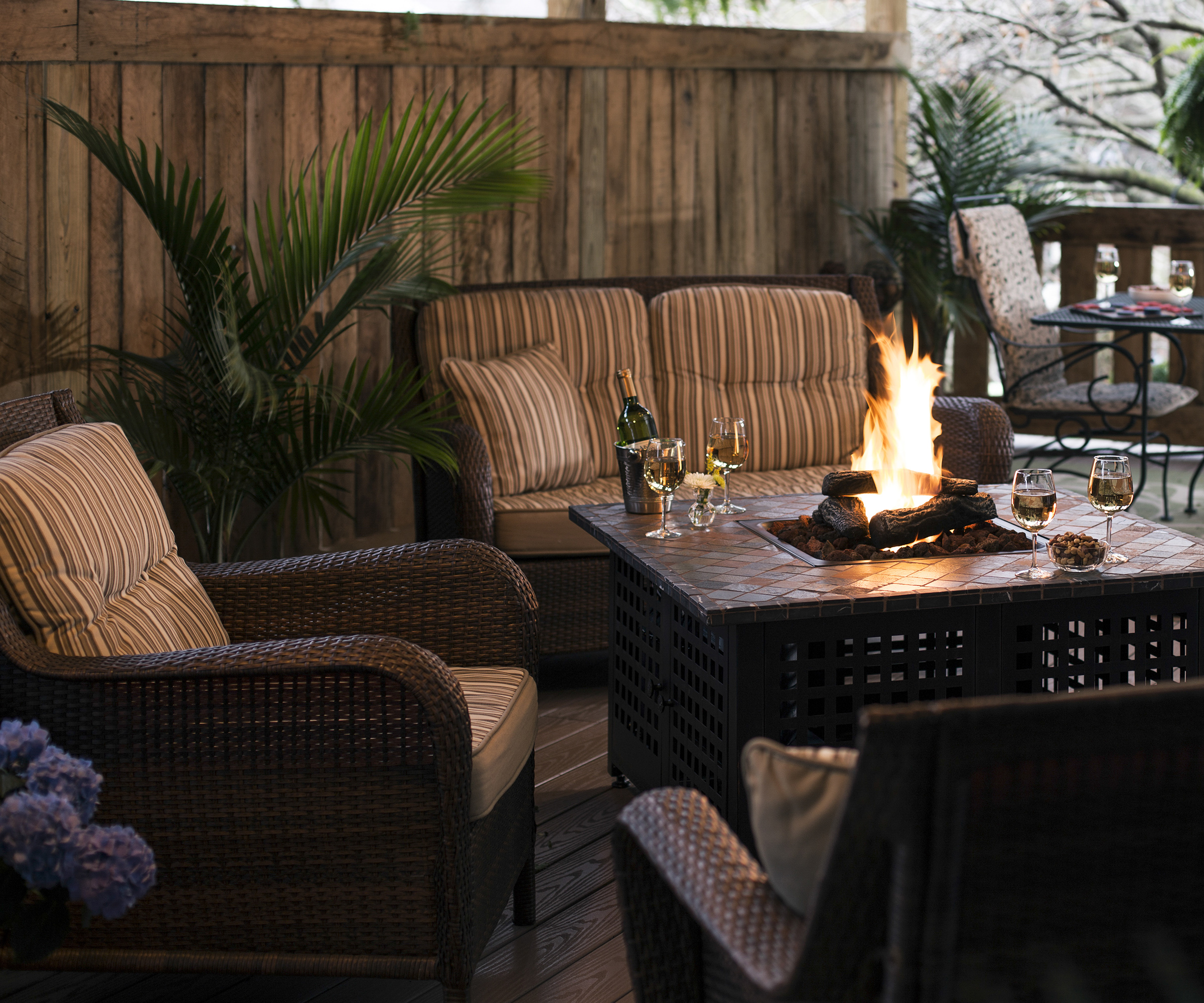
There's a simple rule for using a fire pit in a gazebo. You should never use a wood-burning fire pit in a gazebo, but gas-burning fire pits are relatively safe.
Fire pit expert Chris Turner told me 'Most traditional, wood-burning fire pits aren't safe to use under a gazebo due to the uncontrolled flames and the potential for sparks and embers to ignite the structure.' If you use a wood fire pit in a gazebo, you could easily misjudge how much wood you add to the fire, which could quickly cause the flames to get out of control.
A gas fire pit, on the other hand, is much safer. Pergola maker Stacy Elmore says 'A natural gas fire pit will generally have a very low flame that won't risk damage to your gazebo.' On top of that, you can just turn the flames down if you're worried the fire is getting out of hand, or shut them off completely. This isn't possible with a wood fire pit.
Stacy adds 'Additionally, if you are using wood or charcoal, you risk staining the gazebo with the smoke.' It's not a danger, but it can cause damage to the structure. Permanent gazebos can cost thousands of dollars, so you don't want to do anything that could damage them.
Design expertise in your inbox – from inspiring decorating ideas and beautiful celebrity homes to practical gardening advice and shopping round-ups.

Stacy is the co-founder of The Luxury Pergola and SEE Home Improvements. She and her husband created their own product and now offer The Luxury Pergola all across the country after its initial success in the Indianapolis area.

Chris is the owner of Studio Nisho, a brand renowned for luxury fire pits. With a keen eye for aesthetics and a passion for crafting outdoor masterpieces, Chris has built a reputation for transforming spaces into extraordinary environments.
Does it matter what materials your gazebo is made from?
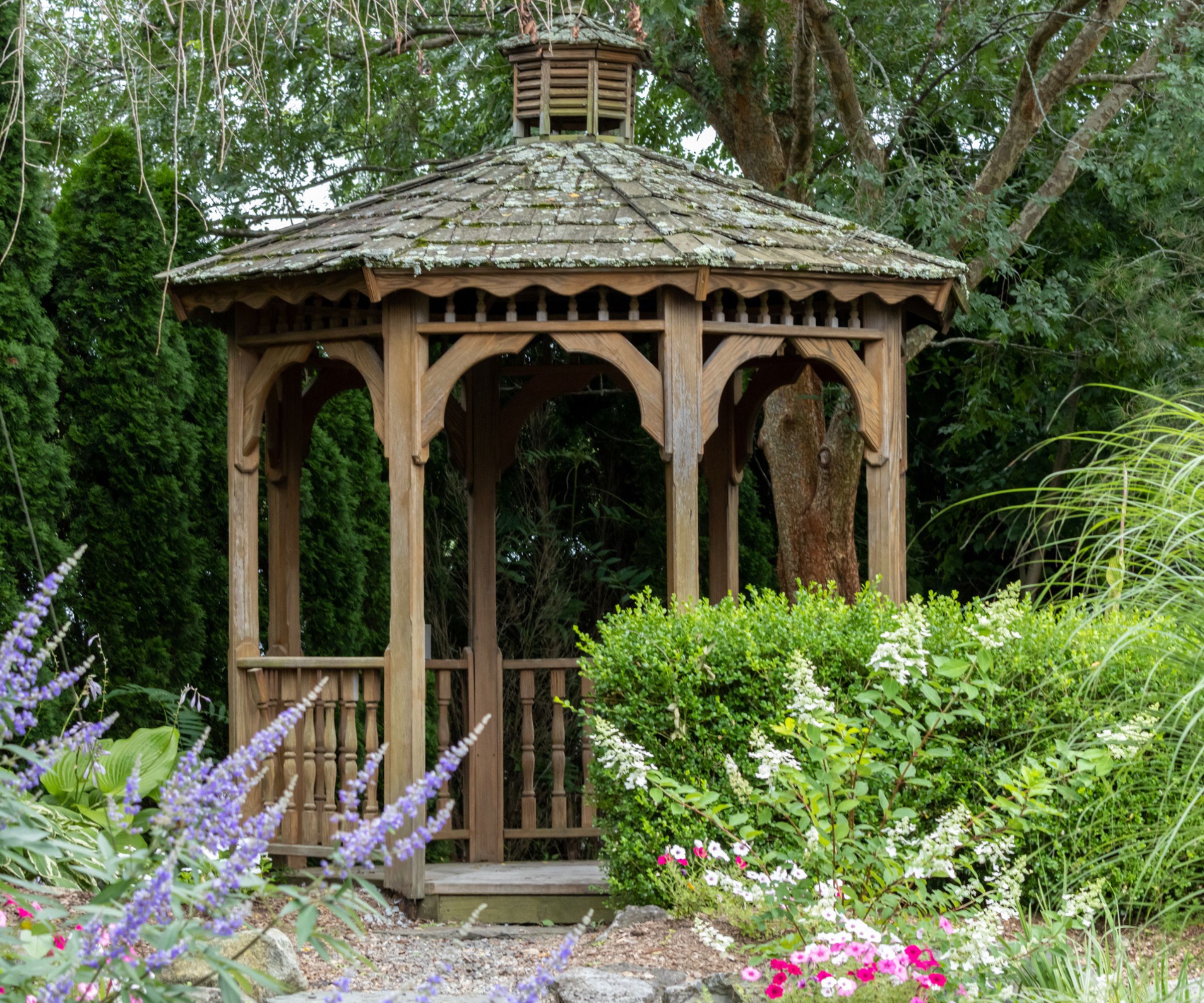
Of course, gazebos made from wood are at the highest risk of setting on fire. Chris Turner says that 'gazebos made from wood or other combustible materials are at higher risk when using any type of fire pit.'
However, before you rush to buy a cheap metal gazebo, make sure you buy a high-quality structure. Metal can be just as dangerous as wood around heat. Stacy says 'There is a rising popularity of gazebos made of metal, specifically aluminum. These handle the heat well, but if the aluminum is too thin, it will start to buckle and "oil can". Oil canning is when the sidewall of the metal starts to warp and buckle under the expansion and contraction from excess heat.' It's not likely with a low flame on a propane fire pit, but too much heat could damage the metal.
On top of that, you need to consider the finish of your gazebo. The wrong paint can warp and flake under too much heat. Stacy says 'If you have roll- or spray-on paint, the heat can damage the material. If you are using metal, it is important to know what kind of paint or powder coat is used. Typically it is best to go with an AAMA 2604 or better powder coat. This rating is known as "ultra-durable" in the industry.' When shopping for a gazebo, keep an eye out for this coat, which should wear harder than others.
How can I keep my gazebo warm without a fire pit?
The experts I spoke to were unanimous that electric heaters are a good alternative for fire pits. Chris Turner says 'Electric patio heaters are an excellent option since they don't have the same flammable risks as fire pits.'
Stacy Elmore agrees and says to 'Make sure the heater is mounted at least eight and a half feet over where people will be standing for safety purposes. When it comes to electric heaters, if you have a 5'x5' space, a 1500 watt heater will suffice, if you have a 10' x 10' space, it is best to go with something north of 3000 watts.' These heaters are easy to come by - you can find relatively cheap electric patio heaters like this on Amazon.
However, these heaters can be very expensive to run. An electric patio heater can cost nearly half a dollar an hour, and propane patio heaters can be three times as much. On top of that, there's a big environmental cost.
Outdoor heaters are inefficient because rather than, for example, central heating warming the limited air in a home, outdoor heaters are effectively trying to heat up all of the air outside, which is constantly being replaced with colder air. Think tank Negawatt has estimated that running five patio heaters in the winter has the same carbon footprint as driving a car around the planet three times. That's a lot of CO2 emissions just to keep warm.
Fire pit FAQ
Can I have a firepit in a pergola?
You can, but everything we've covered about gazebos applies to pergolas too. Never use a wood-burning fire pit under a pergola, and use a gas fire pit on a low flame.
For more help with gazebos and fire pits, take a look at our advice on how to light a gazebo, or how to clean a fire pit.

As a gardens and lifestyle contributor, Alex makes sure readers find the right information to help them make the best purchase. Alex got his start in reviewing at the iconic Good Housekeeping Institute, testing a wide range of household products and appliances. He then moved to BBC Gardeners’ World Magazine, assessing gardening tools, machinery, and wildlife products.
